How to Wax your Car like a Pro
by Contributing AuthorsChances are if you spent your childhood practicing perfecting your Karate moves with the help of Mr. Miyagi, you might have also developed some equally bad waxing techniques. In the movie, The Karate Kid, Mr. Miyagi teaches his student, “Daniel-san,” to wax a car in circular motions with your right hand. He makes no mention of how much wax to us, but he does remind him to “breathe”. He then instructs him to remove wax in the same circular motion with his left hand…again, not forgetting to breathe (see the clip here). While breathing is a good idea, there is no basis for (waxing or removing wax) in a circular motion. In fact, it may create new blemishes to your freshly prepped paint. To properly wax your vehicle, employ the following tools and techniques, and you will ensure a slick finish that is properly protected and shines streak free.
The first thing you need to do is properly prep the paint you will be waxing. This includes washing the paint thoroughly, claying the paint to remove embedded debris (read Todd’s article here), and drying the surface well with either forced air and/or appropriate microfiber towels. Having paint that has been carefully prepped will ensure the wax fills in the “pores” of the paint and bonds with it completely. It will also guarantee that you get the most out of your wax of choice in terms of looks and durability. Waxing a surface that has not been properly prepped may leave a slick finish at first, but it will degrade quickly because the wax hasn’t truly bonded with the paint. Using a good lube like Optimum No Rinse and a quality clay can ensure you don’t trap any particles under the wax.
Here I am spraying my clay lube
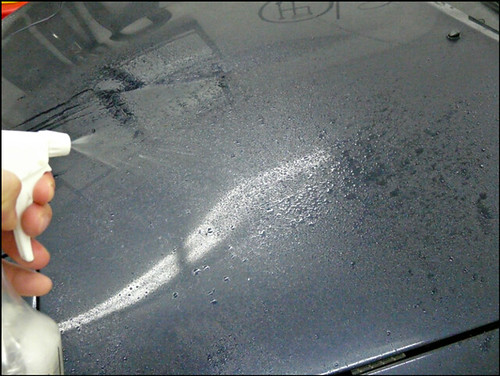
And here’s what I was able to remove from the paint
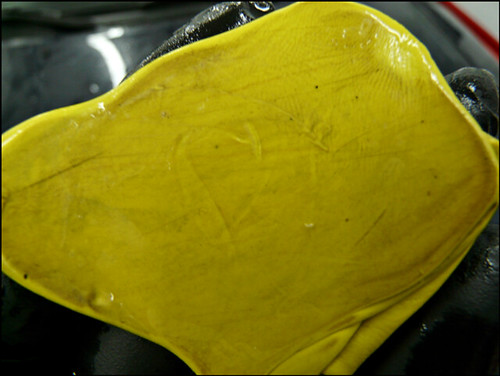
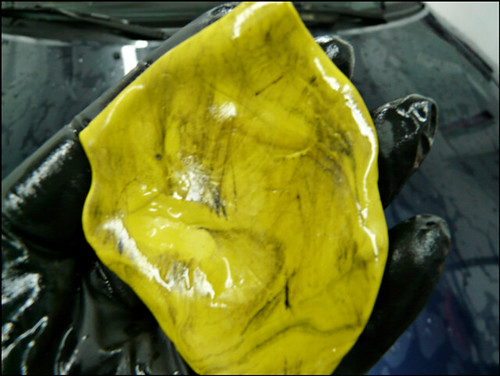
Next come the tools. I like waxing with a Polishing Pal and a 4- inch Finishing Pad. The reason I choose these tools is that I like how they provide even pressure to the surface I am working with. If you are using a thin applicator or a microfiber to apply wax, your fingers create an uneven surface and uneven pressure during application. The resulting effect is a surface that will have uneven waxing. You will end up with areas where the wax will be hard to remove, streaks, and possible shading left behind from oils. The Polishing Pal and a 4- inch Finishing Pad paired with the right application technique will provide an application that is even, complete, and comes off with ease.
Another consideration is your wax. While not a tool, it is the highlighted product of the whole process. Which wax you ultimately choose is up to you, but how much is pretty much the same across the board. If you watch Daniel-san, he dunks the towel into the wax tub and lathers the paint with way too much wax. While not everyone uses this much wax, many users apply more than necessary. A thin, almost invisible layer is all you need. To ensure full coverage, you can use multiple layers, but to the classic “good thick coat of wax” again has no basis. You end up wiping off all but an extremely thin layer that has filled in the paint pores and bonded with the paint. When your spending all that money and all that time waxing your car, the last thing you want to be doing is wiping away excessive amounts that could have been used for another waxing, or spending time removing caked on wax. Most modern waxes are in fact designed to be removed with ease, as long as you apply it properly. Note: In the pictures for this article, I used lots of wax for illustrative purposes. Normally, I would use much less wax and it would be difficult for the camera to show what I was talking about.
So why not use circular motions like Mr. Miyagi taught us? For one, circular motions have no real basis as far as coverage. It probably is supposed to mimic the action of an orbital machine, but all it ends up doing is causing halo effects that can be hard to remove and introducing potential marring in a circular motion (the type you just spent hours polishing away). The best technique is to use one of the following: The Linear or The ZW. In both cases the wax the motion of application is from front to back (following air flow). What differs is the motion of the applicator.
The Linear method uses a linear, front to back motion creating long, straight lines of wax on the paint. Work in a 2’x2’ section at a time going back a forth within the section several times (maybe 3-5 section passes). Always work from front to back only. By working the section for some time, you ensure proper coverage. If you do introduce micro-marring from any dust trapped between the pad and the paint, they will follow a straight line and be difficult to see.
Here are a couple of pictures of the Linear technique with increasing amounts of wax so you can see what it should look like.
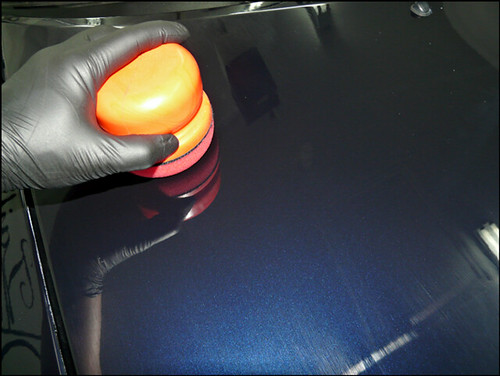

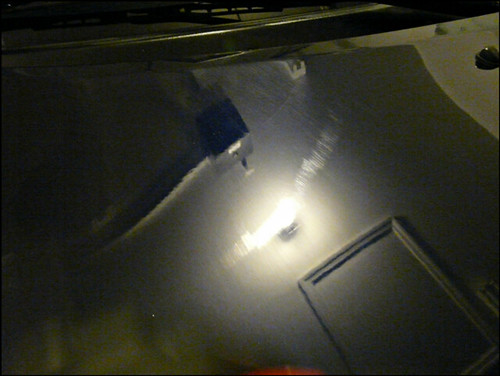
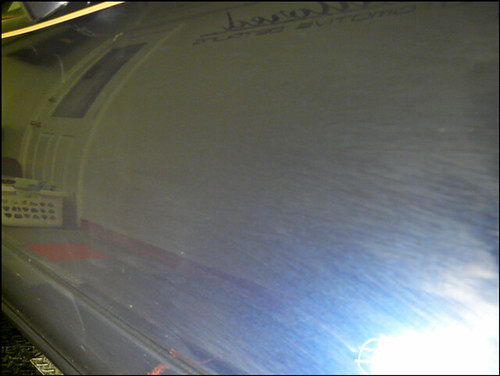
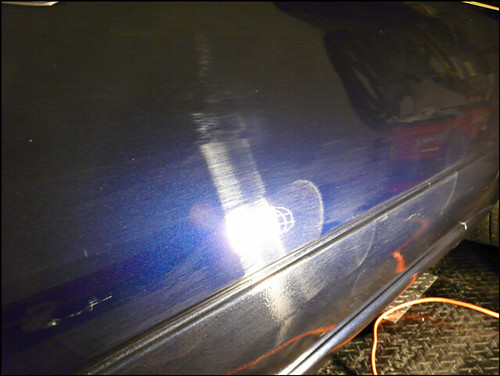
The ZW method still works a 2’x 2’ section at a time, still following the airflow path. The difference with this technique is that you will be moving the applicator to make Z’s and W’s. I like to make Z’s as I work 1 pass and then W’s for the next pass. This is my favorite application style. It seems like I can get the paint pores from all angles with this style and with the strokes being shorter, any micro-marring that may get introduced, is introduced in short strokes making them even more difficult to see.
Here is a photo of what it would look like (again, lot’s of wax used to allow the camera to show you the look)
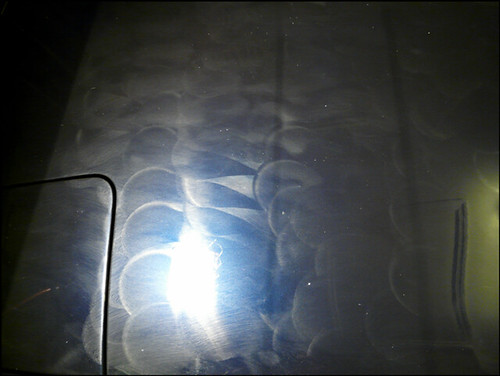
Here is a picture of Linear and ZW side by side
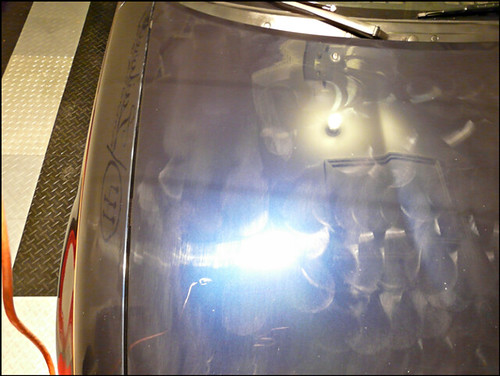
Finally, after the wax has cured as per instructions, it’s time to remove it and see the shine! For this step I like selecting a towel like The Great White. White towels show dirt easily, and if you’re getting a dirty towel at this point, stop and fix the area before proceeding with removal. The first step to the removal process is to “break through” the wax. This is done to make removal easier and safer on the paint. To do this, fold the towel into fourths, and place on a section of the panel you want to begin removing. Apply pressure and twist the towel left and right underneath your palm.
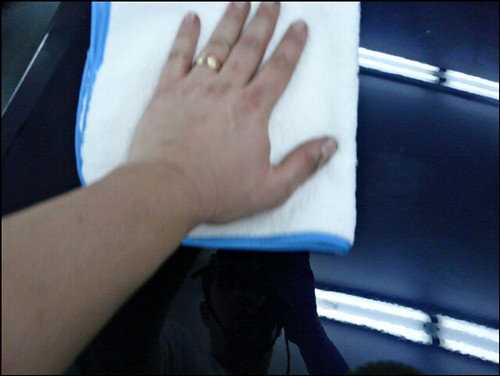
When you lift the towel you should see an area that is haze free and beautiful.
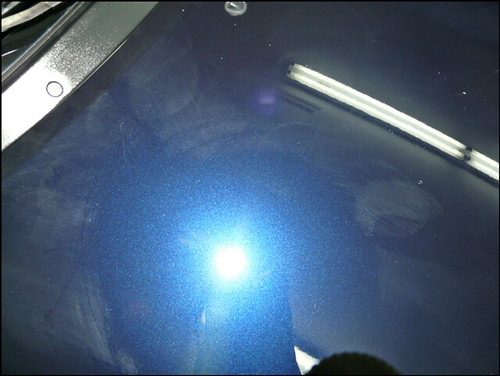
You will continue removing the wax using this section as the “epicenter” and working out from it. In short, slow, almost chipping movements, move the towel perpendicular to the way you applied the wax. This will ensure you end up without streaks.
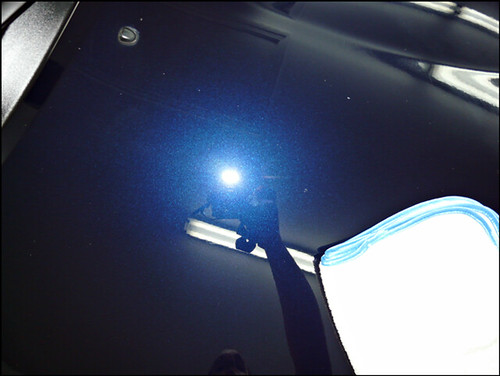
Continue in this manner over the entire car, re-breaking the wax on each panel. Again, think “W’s” and never doing the “wild-arm”…always in control to keep from messing up all of your hard work. When finished with removal, it is a good idea to follow up with a second wipe down with a clean towel or even a quick detailer like Red Mist to ensure there are no streaks.
What’s left? Nothing! At this point you may not have cool Karate moves, but you have effectively waxed you paint to perfection and there’s nothing left to do but enjoy it. So grab a chair or the keys and show off that shine!
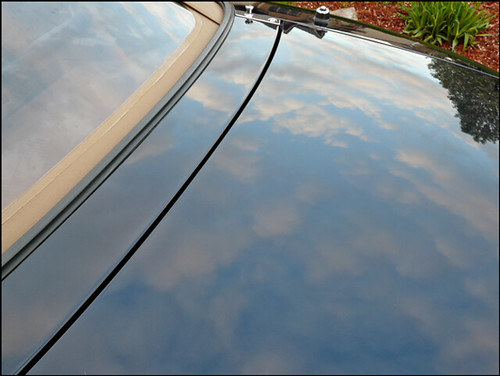
Buy Products From This Article
Purchase the products used in this article individually or in one convenient package here!








Very nice article David…thanks for sharing.
Todd
I am fairly novice to all of this. Apply clay lube and then wipe. Do I not have to use a clay bar? What is the difference?
As David explained it, claying is performed to deep clean the surface of the car to maximize the results of your wax. This doesn’t need to be done before every wax session…you’ll probably be putting on a fresh coat of wax once per month. Claying only needs to be done a couple of times per year.
For more information on claying, please refer to my article: How to Properly use a Clay Bar
Dear David or Todd,
I intend to follow the step on detailedimage.com in the how to section on: washing/drying, clay bar, polishing (same steps as the Acura TL done by Todd), glazing, then carnauba wax (Blackfire Wet Diamond Ivory Carnauba Paste Wax in mind). When i reapply the wax (once a month), do i have to use a stronger concentration of soap in the washing process to remove current wax (example 2oz/gal of Chemical Guys Citrus wash and clear)?
anybody can reply this would much be approciate.
Great Article David! I think I may just have to add a Polishing Pal to my next order as it looks like it would be great for paste waxes.
Rasky
Thank you very much guys! The Polishing Pal is great for waxes and even those harder to reach areas a DA won’t fit into or where you don’t want to risk high RPMs. I love it’s even pressure.
How are you guys getting a paste wax onto the pad? For waxing, I like to use Poorboy’s Natty’s Blue and Red, both are 8oz containers. To me, trying to squeeze a 4″ foam pad in the 8oz container to get the wax onto the pad is pretty tough. Any hints?
Hi Matt and thank you for your question. The best way to get wax on the 4″ foam pads is to remove the paste wax from its container. Most paste waxes will pop out like a hockey puck if you hold them upside down and shake them out. Then you can rub the wax onto the foam pad, kind of like Chap-Stick.
Don’t forget to put the wax back into the container and not to drop it while loading up the pad.
I’ve never seen it recommended this way, but I like to use a clean putty knife to remove the paste wax from the container, then I spread it onto the applicator pad.
This would be similar to using a butter knife to remove peanut butter and spread it on a slice of bread.
great write up, got my polishing pal this morning and just finished waxing my car. awesome product for waxing.
Great write up indeed. And an even greater color to show the after effects.
Seems that the ZW technique would require going across the air flow of the car instead of with it as in the linear method…am I missing something? Can you maybe show it as 2 steps…show the Z and then the W on top?
When you make your “Z” or “W” are you going right over the top of what you did on the previous pass? Or are you making a new pass directly “below” what you did on the first pass?
Good question Ryan! It actually took me a second to picture what you were asking but, now that I am, I realize I never even thought of the different interpretive possibilities. When I do the “ZW” I an placing one pass directly over top of the other. I think of it kind of like methodical painting where I get better coverage by applying paint from different angles. When applying the wax (or sealant) I want to make sure I get it in all of the paint’s nooks and crannies. As far as Mike’s question regarding airflow, it does go against it to some degree. However, I find that overall, it provides me with the best finish and coverage.
Should I compound the paint Before I wax? Is the ZW the way the wax is applied?
I really found your suggestions on how to properly wax your car to be very helpful. I didn’t know that one of the main steps is to really prep your car paint to wax and that you should not only wash the exterior but you should use clay to remove embedded debris. I didn’t realize how much extra gunk there could be on the surface if you don’t use clay before waxing. Thanks.
Excellent Article David,
I had some questions though, How to wax the area that has a dent? Would it make the dent worse? Also Is there any special lubricant that can fix car dents?
Thanks in advance.